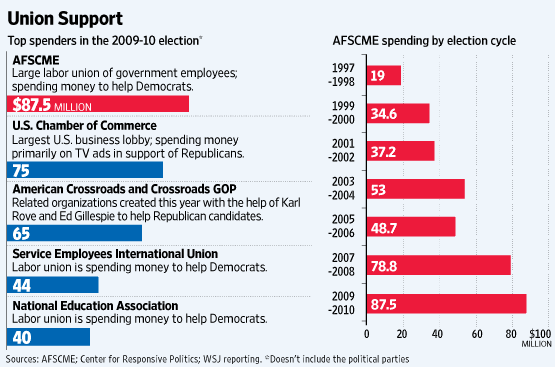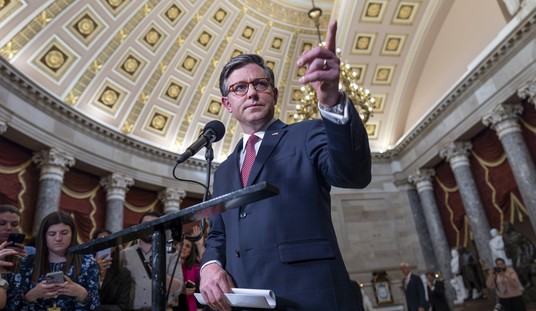Desperate Democrats have been hyperventilating for the past month over money being spent by corporate and other groups, notably the Chamber of Commerce and Americans for Prosperity, to run campaign commercials. To conservatives, running commercials to attempt to persuade voters in advance of an election is known as “free speech,” and turnabout is fair play after corporate money went heavily for Obama in 2008, but let’s play along here; how much of an advantage does the GOP have here?
Well, according to Greg Sargent, the Washington Post’s in-house left-wing activist, it’s huge: “The total on the right: $74,733,356. On the left: $9,868,057. And the groups on the left, unlike on the right, consist of well-known names like the Sierra Club and Defenders of Wildlife.” This is the standard spin from the Democrats, and Sargent is nothing if not a reliable source for whatever the standard spin from the Democrats happens to be on a particular day. But conspicuously absent from Sargent’s list are the largest unions, led by unions of public employees whose taxpayer-funded salaries are funneled into compulsory union dues and then passed on to the people who set those taxpayer-funded salaries. The lead article on the front page of this morning’s Wall Street Journal tells the story – check out the Journal’s telling graphic:

That’s right, three of the five largest campaign spenders this year are not business or pro-business groups but unions afffiliated with the Democrats and dominated by public employees.
The largest spender is AFSCME (the American Federation of State, County and Municipal Employees), which is spending $87.5 million, more than any business group and nearly ten times what Sargent claims is the entire spending budget for outside groups on the left (maybe he doesn’t get the Journal, but somebody at the Post should have been embarrassed by how misleading his figures are in light of the Journal’s report, which has been online since last night). The Service Employees International Union (SEIU), which consists heavily of public employees, and the National Education Association (NEA), which consists of public school teachers, round out the top five at $44 and $40 million, respectively. It’s not hard to see why they’re running scared: as the WSJ notes, all three benefitted significantly from the funnelling of stimulus money to state and local governments (private sector unions have their own reasons to fear a change in control of Congress in 2010). This is government by the government, of the government, for the government. And it shows the absurd hypocrisy of Democrats complaining about pro-business groups trying to rally a beleaguered private sector to defend itself against the government when the government’s own employees’ unions are outspending the biggest business groups.
The Democrats aren’t against big outside spending in elections. They just don’t like it when the other side gets to fight back.













Join the conversation as a VIP Member